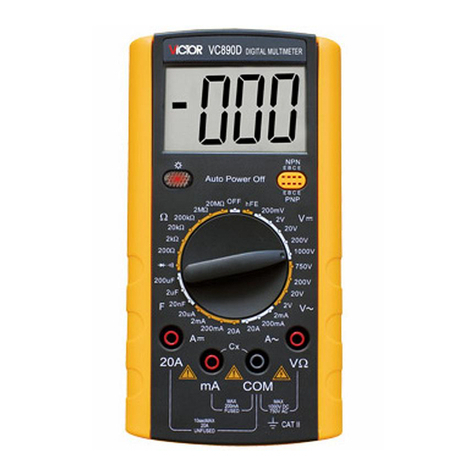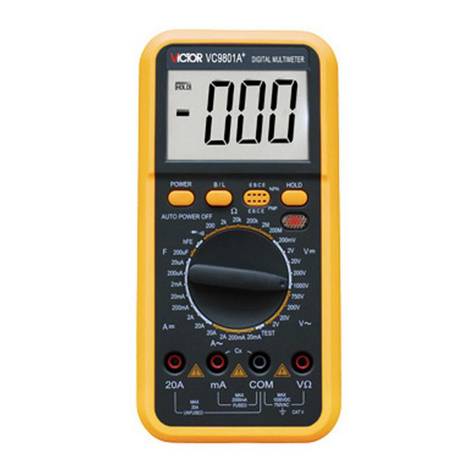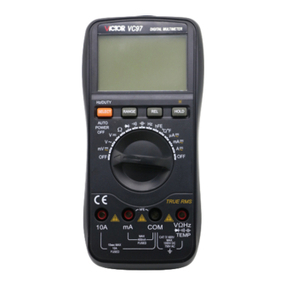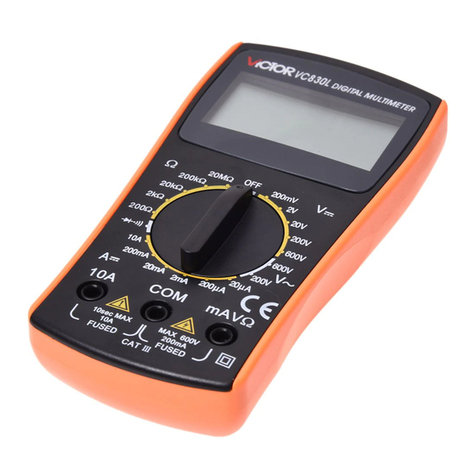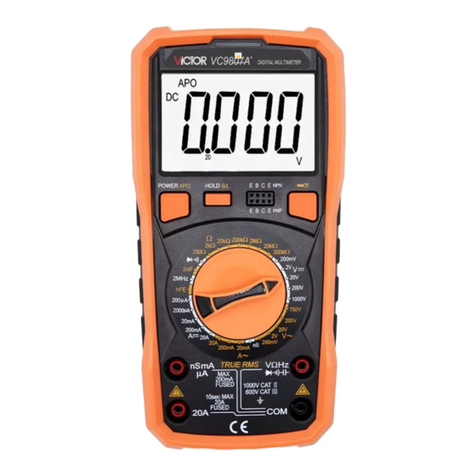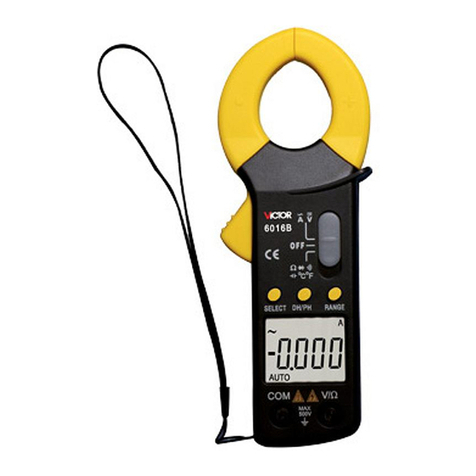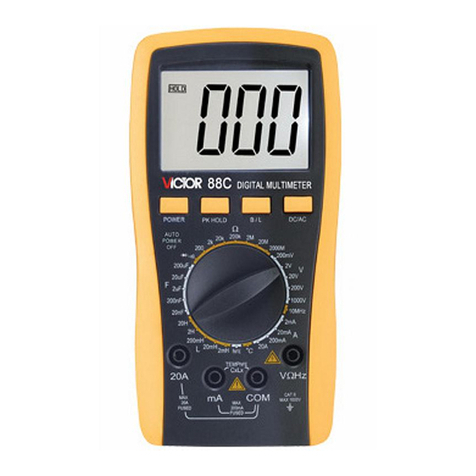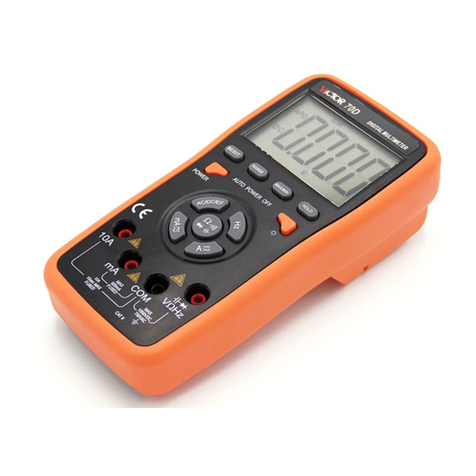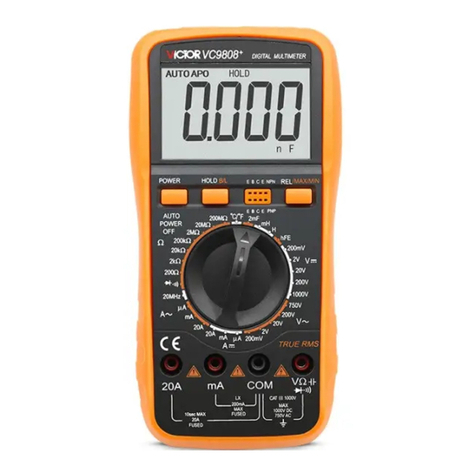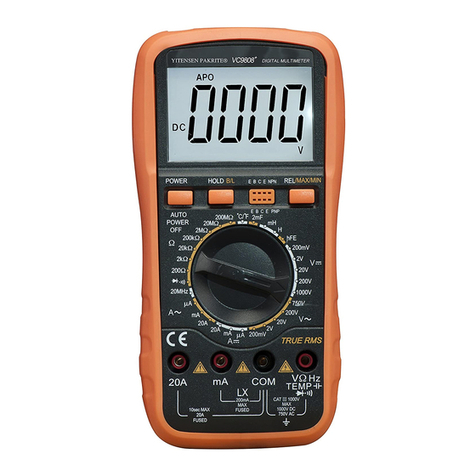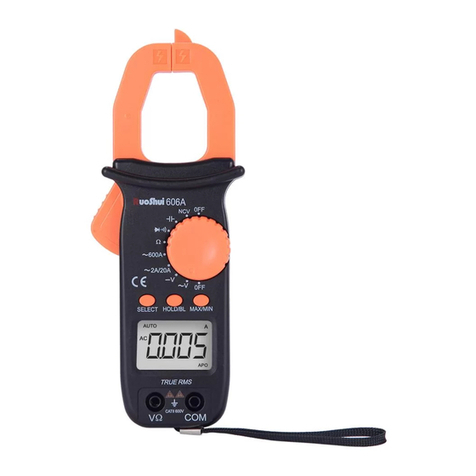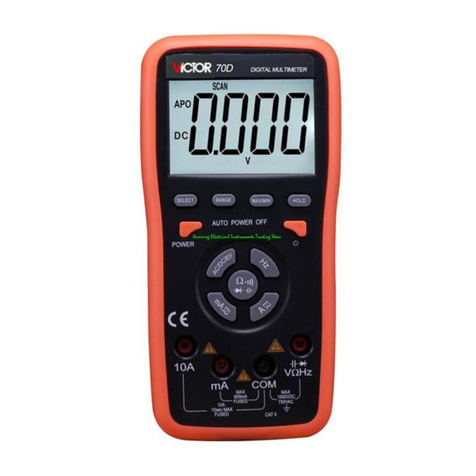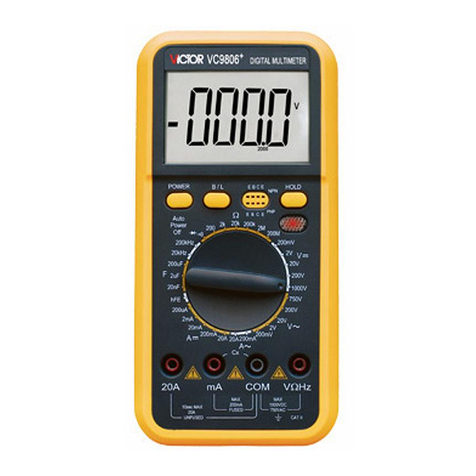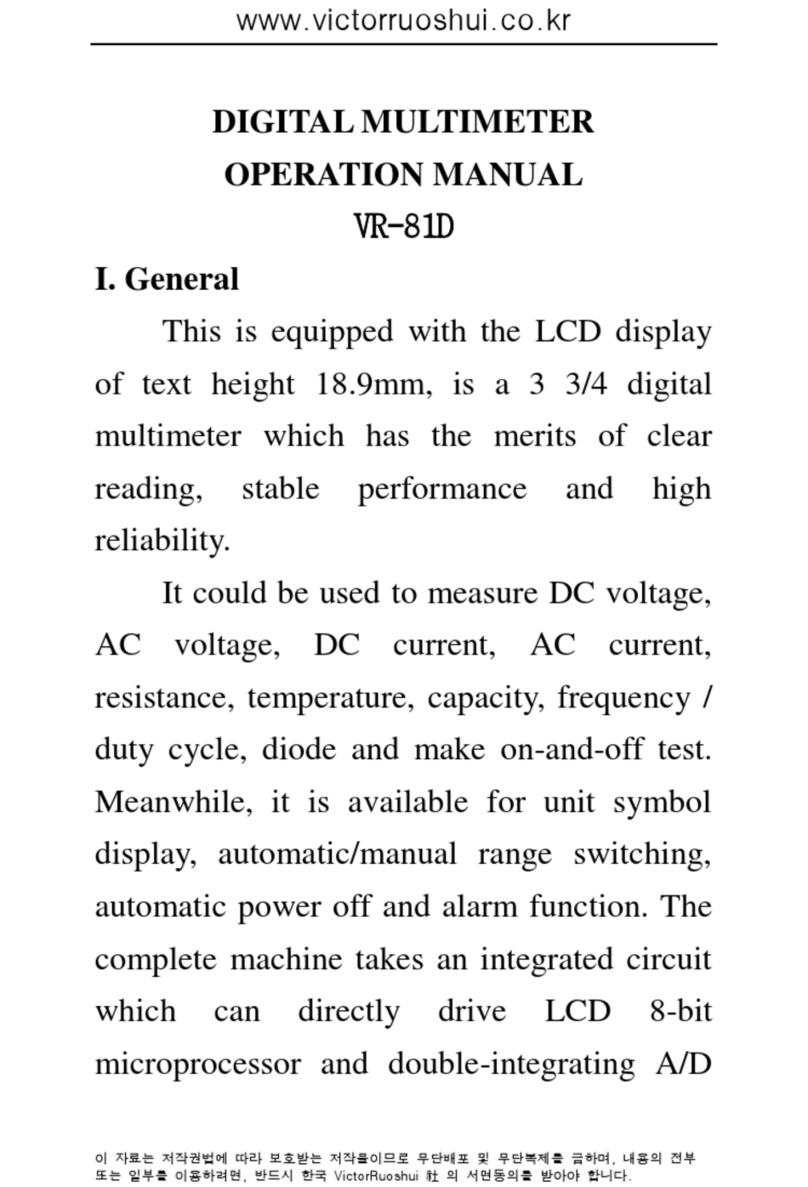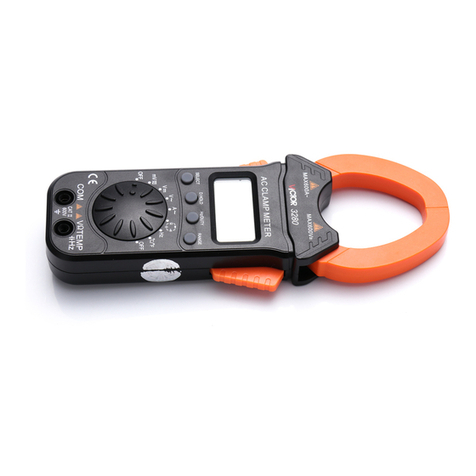
10
For example, if the relative base is 15.000V, and the present reading is 14.100V, the display will show
-6%. Press REL again to exit the relative modifier.
NOTE
The relative modifier cannot be selected if the display shows “OL” or is blank. (The display would be
blank, for example, because of range changes.)
Selecting the relative modifier (REL) turns off autoranging and locks in the present range. Make sure
you are in the correct range before selecting the relative modifier. If you press other buttons after the
relative modifier has been selected, you will automatically exit REL.
HOLD (Touch Hold) Modifier
The Touch Hold modifier allows you to hold the measurement reading on the display.
Press HOLD to select the Touch Hold modifier. When Touch Hold is selected, “HOLD” annunciator is
lit on, and the beeper emits a single beep. Press HOLD again to exit Touch Hold modifier, and the
beeper emits a single beep.
MN MX AVG (Minimum Maximum Average) Modifier
The MN MX modifier causes the meter to store the minimum and maximum inputs measured since the
MN MX AVG modifier was selected. Press MN MX to select the MN MX AVG modifier. When the MN
MX AVG modifier is first selected, the minimum, maximum and average values are set to the displayed
reading and the “MAX” annunciator lights, once the maximum value showed on the primary display,
the beeper emits a single beep. Press MN MX again to display the minimum reading and the “MIN”
annunciator lights, once the minimum value showed on the primary display, the beeper emits a single
beep. Press MN MX again to display the average reading on the primary display (“AVG” annunciator
lights). Each subsequent press the MN MX button toggles among the minimum, maximum and
average measurements taken. The measurement reading displayed on the secondary display. To exit
the MN MX AVG modifier, press and hold down the MN MX button for two seconds or press other
function buttons.
Selecting the MN MX AVG modifier turns off autoranging and locks in the present range. Make sure
you are in the correct range before selecting the MN MX AVG modifier.
COMP (Compare) Modifier
The compare function (COMP) provides an easy way to determine if a reading falls within a
designated range of values. In the compare mode, the meter displays a reading in the secondary
display and indicates in the primary display if that value is lower (CO-LO) than, higher (CO-HI) than, or
within a range (PASS) you selected, if the reading lower or higher, the beeper emits a continuous tone.
Compare Modifier can be used under dc voltage, ac voltage, dc current, ac current and omh function,
in compare mode, the meter is in manually range mode..
Following the step to enter Compare Modifier
zSelect a function and a range
zPress COMP to toggle in Compare Modifier
zBefore selecting the compare function, set the high and low compare point first, when compare
modifier selected, “MAX” annunciator lights, and the leftmost digit on the primary display is
flashing, then can set the high point, press AUTO to select the digit to be set, each press AUTO
causes the digit to the right to be selected and flashing, press or to up or down
the flashing digit. Press the COMP again, “MIN” annunciator lights, and the leftmost digit on the
primary display is flashing, then can set the low point, press AUTO to select the digit to be set,
each press AUTO causes the digit to the right to be selected and flashing, press or to
up or down the flashing digit. Each subsequent press the COMP button toggles between high
set, low set and compare measurements taken. To exit the Compare Modifier, press and hold
down the COMP button for two seconds or press other function buttons.
